Can the Russian invasion of Ukraine be avoided in the first place? Definitely, but the conflict was never about Ukraine to begin with. Russia was engaged in a bold brinkmanship game with the United States and NATO over their respective sphere of influence. And Ukrainian President Zelensky was foolish enough to believe that Russian Vladimir Putin would not dare invade Ukraine.
Joe Biden too thought Putin was bluffing, hence the U.S. president made the biggest blunder of his life when the U.S. and Ukraine signed a “Charter on Strategic Partnership” on Nov 10 last year. It was essentially Washington’s support for Kyiv’s right to pursue membership in the North Atlantic Treaty Organization (NATO) – if Ukraine met the alliance’s criteria.
The November agreement could be hatched to test Russia with no serious intention to accept Ukraine into NATO. If it was a serious offer, the NATO could quickly accept Ukraine before the invasion. The Western powers have months to do that while Putin was mobilizing his army. NATO’s Article 5 says that an attack on one member of NATO is an attack on all of its members.
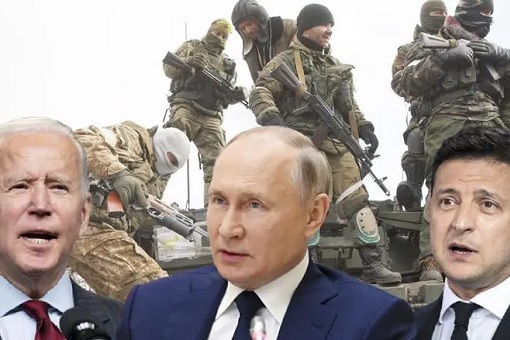
So, Ukraine could be protected once it becomes a member of NATO. But that didn’t happen. Zelensky was encouraged and led to believe that the U.S. and NATO would help to fight the Russian. Whatever game the U.S. was playing, Putin saw it as the last straw that broke the camel’s back. Putin saw the agreement as the last milestone before Ukraine joins NATO, therefore he had to act.
Russia was also not impressed when Ukraine announced in April 2021 that it may force to acquire nuclear weapons if NATO does not accede to its membership demand. Moscow cannot accept either option – Ukraine as a member of NATO or Ukraine in possession of nuclear weapons. At the end, Zelensky was left out to dry – without NATO membership or nuclear weapons.
Now, the U.S. wanted the world to follow its order – cut off all bilateral ties with Russia because the most it could do was slap economic and financial sanctions on the Kremlin. If the sanctions fail, not only America’s status as the world policeman would be undermined, the China-Russia combo could emerge stronger to challenge the U.S. dominance in the world.
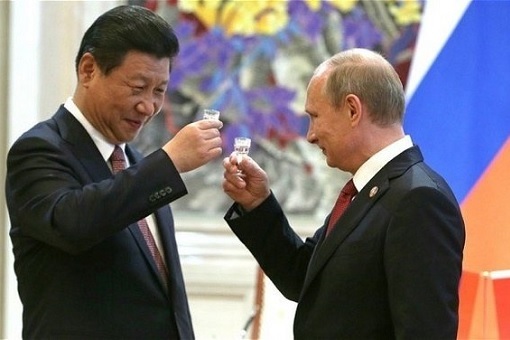
This is precisely why China has to help Russia – silently. It’s a simple equation. If Russia collapses, China will be the U.S.’ next target. Together, Russian’s military prowess and Chinese economic power are a serious threat to the U.S. The Ukraine conflict has shown that the U.S. cannot fight two wars at the same time with rivals as powerful as Russia and China.
After losing the brinkmanship game with Russia, the U.S. now warns China not to provide Russia with military or economic lifeline, threatening to slap secondary sanctions against the Chinese if it does not obey. To drag China into the conflict, Washington claims that Beijing had signalled willingness to provide military assistance to Russia, a laughable allegation.
Beijing, of course, has accused the U.S. of spreading false information with malicious intentions, while Russia has denied asking China for military help. However, China is not the only country that disagreed with the U.S. sanctions on Russia. China is just one of 35 countries that abstained from condemning Russia during a recent United Nations General Assembly.
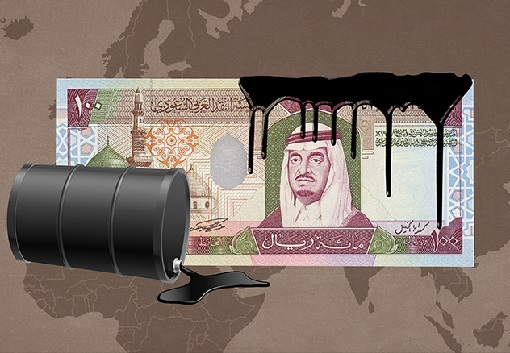
As the crude oil prices hit the roof, President Biden has tried to approach U.S. allies in the Middle East for help. The White House wanted Saudi Arabia, supposedly U.S. biggest and closest ally in the region, to increase oil supply after formally banning Russian oil imports. The U.S. has also opened up diplomatic channels with Venezuela, a Russian ally and which has the world’s largest oil reserves.
According to the Wall Street Journal, both leaders of Saudi and United Arab Emirates have “declined calls” with the U.S. president. Saudi Crown Prince Mohammed bin Salman and the UAE’s Sheikh Mohammed bin Zayed al Nahyan basically said they were not free to talk to Biden, despite the U.S.’ requests for discussions to pump more oil to ease supply fears after Russia threatened to close the tap.
The embarrassment came after OPEC+, which includes Russia, declined to increase oil production despite the Western sanctions. The Saudi crown prince wanted to teach Biden a lesson. It was only in 2020 that Joe Biden called Saudi a “pariah”. Now that the economic sanctions fail to contain Putin, the U.S. president is begging for help from the same pariah kingdom he had mocked and insulted.
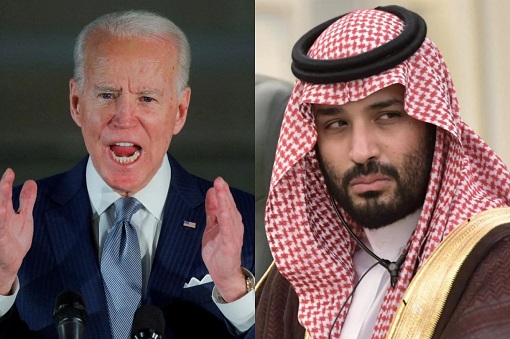
Instead of entertaining the U.S., the Saudi has instead engaged in active talks with China to sell its oil in Yuan / Renminbi, bypassing the U.S. dollar. The Chinese buy more than 25% of its oil from Saudi. Last year (2021), Saudi sold 1.76 million barrels a day to China, more than Russia’s 1.6 million barrels. If the commodity is priced in Yuan, it would certainly boost China’s currency.
The kingdom has also expressed its interest in yuan-denominated futures contracts, known as “petroyuan”, something which China introduced in 2018 to compete with petrodollars. While Saudi is not expected to shift overnight all its 6.2 million barrels a day of crude exports to Yuan from the dollar, it would be a big deal even only half of its oil exports to China is transacted in Yuan.
It would start the ball-rolling for other Arab nations to embrace Yuan as a tradable currency for oil because Saudi is the de-facto leader of OPEC. The chain-reaction could see a steady adoption of the Yuan as Saudi and its allies hedge their bets between the U.S. and China – world’s two largest economies. The strategy is to extract the best deals from both parties.
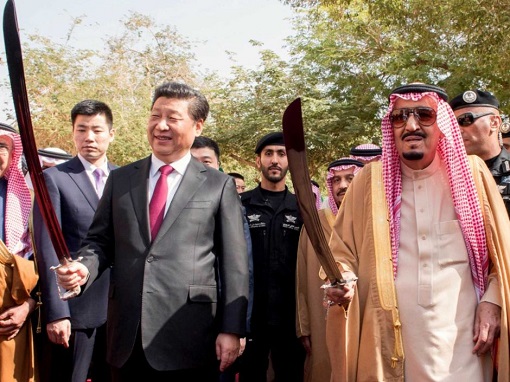
Saudi Arabia has traded oil exclusively in dollars since 1974 largely due to a deal with the Nixon administration that included security guarantees for the kingdom. However, the U.S.’ lack of support in the Yemen civil war, not to mention Biden’s attempt to revive the previous deal with Iran (Saudi’s bitter rival) over its nuclear program, has made Saudi realized that America is not reliable.
Unlike the U.S., Saudi Crown Prince Mohammed saw how China has helped Saudi build its own ballistic missiles, and even provided consultations on a nuclear program. The U.S. has a different policy – to make Saudi forever depends on the U.S. for weapons and protection, so that American defence contractors can milk the Arab nations indefinitely.
So far, Beijing has offered incentives such as multibillion-dollar investments in the kingdom like NEOM, a pet project of Crown Prince Mohammed. Such mega projects could be funded by Yuan revenues from the crude oil exports to China. Saudi also hopes the shifting to the Chinese currency would strengthen both countries’ friendship, which in turn reduce support for Iran.
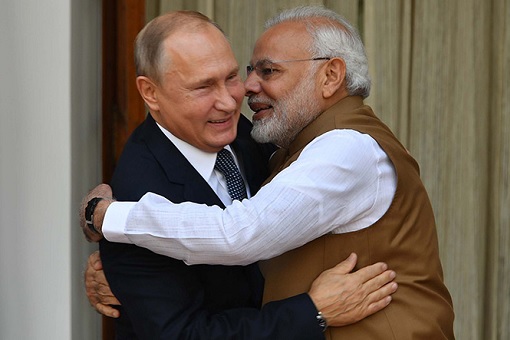
India is another country that has given the cold shoulder over sanctions on Russia. Instead, the State Bank of India saw the conflict as an opportunity to promote rupee-ruble trade between Russia and India. When Biden administration rushed to ban Moscow from the SWIFT international payment “messaging” system, the U.S. had obviously ignored other allies like India.
Indian exporters are currently awaiting payments of about US$500 million that have been stuck after the sanctions on Russian banks. Worse, the international sanctions and financial restrictions on Moscow are disrupting supply chains and driving up commodity prices, which add to the inflation problems of developing economies such as India.
Like China, the country is being lured with discounted Russian oil, after Russian deputy Prime Minister Alexander Novak spoke to Minister of Petroleum minister Hardeep Singh Puri with an offer of more oil to India. Thanks to the U.S. sanctions, India is forced to work out a new mechanism to facilitate trade with Russia using local currencies.

Even though India’s bilateral trade with Russia stood at merely US$10.8 billion, accounting for less than 1.5% of the South Asian nation’s total, New Delhi is heavily dependent – up to 60% – on Moscow for crucial defence equipment and parts. Under the proposed mechanism, a Russian bank will open an account in an Indian bank where ruble is deposited after converted into rupee, and vice versa.
The rupee-ruble trade mechanism will allow Indian exporters to be paid in rupees for their exports to Russia instead of dollars or euros amid sanctions against Moscow. However, there are some concerns about how to peg the currencies – neither the Russian nor Indian currencies are widely used in international trade. The solution – Chinese Yuan.
Using China’s Yuan / Renminbi as a “reference currency” to value the rupee-ruble trade mechanism is being seriously considered by India and Russia due to the currency’s stable value and its status as the world’s fourth most-traded currency after the US dollar, the euro and the British pound. Meaning the dollar will play no role at all, eliminating demand for the U.S. currency.
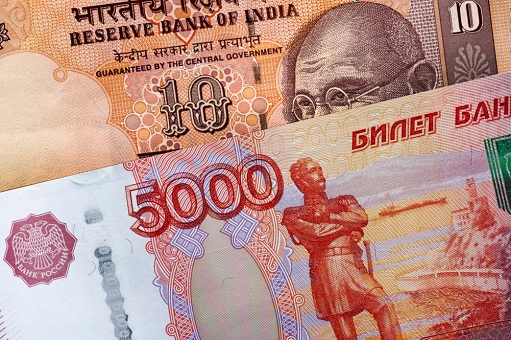
As the world’s third-largest oil importer, India, which imported 4.2 million barrels per day in 2021, has been looking to diversify its oil supplies in recent years. It’s not rocket science that India-Russia trade will increase when New Delhi imports more oil from the Kremlin. In addition, Russian banks are exploring alternative payment channels with India, and vice versa.
For example, Indian’s Unified Payments Interface (UPI) and the Faster Payments System (FPS) of the Bank of Russia could be used to continue both nation’s cross-border trade. UPI is an instant real-time payment system to facilitate inter-bank peer-to-peer and person-to-merchant transactions. FPS allows people to transfer money online 24/7 using a mobile phone irrespective of the payer’s and the receiver’s banks.
India and Russia hope to boost bilateral trade to US$30 billion by 2025. Currently, India has a trade deficit with Russia, from which it buys energy, fertilisers and jewels, while Indian exports to Russia are largely pharmaceuticals. But this will not be the first time India evades Washington’s sanctions. It has been buying Iranian oil using rupee-rial mechanism, while the U.S. closed one eye.
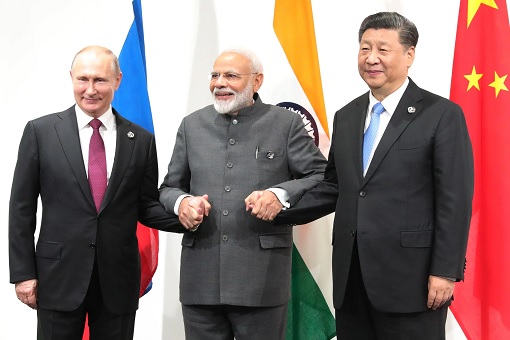
It would be interesting to see if the U.S. will get mad and furious, and threatens to impose secondary sanctions on India, the same way it did to China. The U.S. is India’s biggest export destination, purchasing more than US$50 billion of Indian goods per year. But any retaliation would see India moves closer to Russia, and even China.
With global card networks such as Visa, Mastercard and American Express boycotts Russia, both countries are also discussing the acceptance of India’s RuPay Cards network and Russia’s MIR Cards as alternatives to enable financial transactions. The U.S. and Europeans cannot close all the doors to punish Moscow. China and India are ready to open the door because there’s a huge opportunity in Russia.
Other Articles That May Interest You …
- Russian Sanctions Could Backfire On The US Dollar – Why It’s Worthwhile To Diversify To Chinese Renminbi
- Global Recession And $300 Oil – Russia Threatens To Weaponize Oil, Biden Scrambles For Help From Other Dictators
- China Creates Digital Currency – Here’s Why It’s A Big Deal To The World’s Economy, And A Big Problem For The U.S.
- Economic Destabilization – How China Prepares For American & Japanese Military Interference In Taiwan Conflict
- China Has Swiftly Retaliated Against The EU Sanctions – And This Could Affect The Europe’s Investment In China
- Printing Money – The Stupid Backdoor Deputy Minister Who Thought Malaysia Ringgit Is As Powerful As US Dollar
- Lawsuits For Trillions Of Dollars Against China Over Spread Of Coronavirus – Here’s Why It’s A Waste Of Time
- Xi Jinping Says “No Force Can Stop The Chinese”, Shows Nuclear Missiles Which Can Hit The U.S. In 30-Minutes
- China Strikes Back!! – Trade War Becomes Currency War After Suspends U.S. Agricultural Goods & Devalues Currency
- From Trade War To Tech War – After 5G Technology, The US Aims To Cripple China’s Artificial Intelligence
- North Korea’s 10 Clever Tactics To Evade Economic Sanctions

|
|
March 17th, 2022 by financetwitter
|


|

|

|

|

|

|




























Comments
Add your comment now.
Leave a Reply